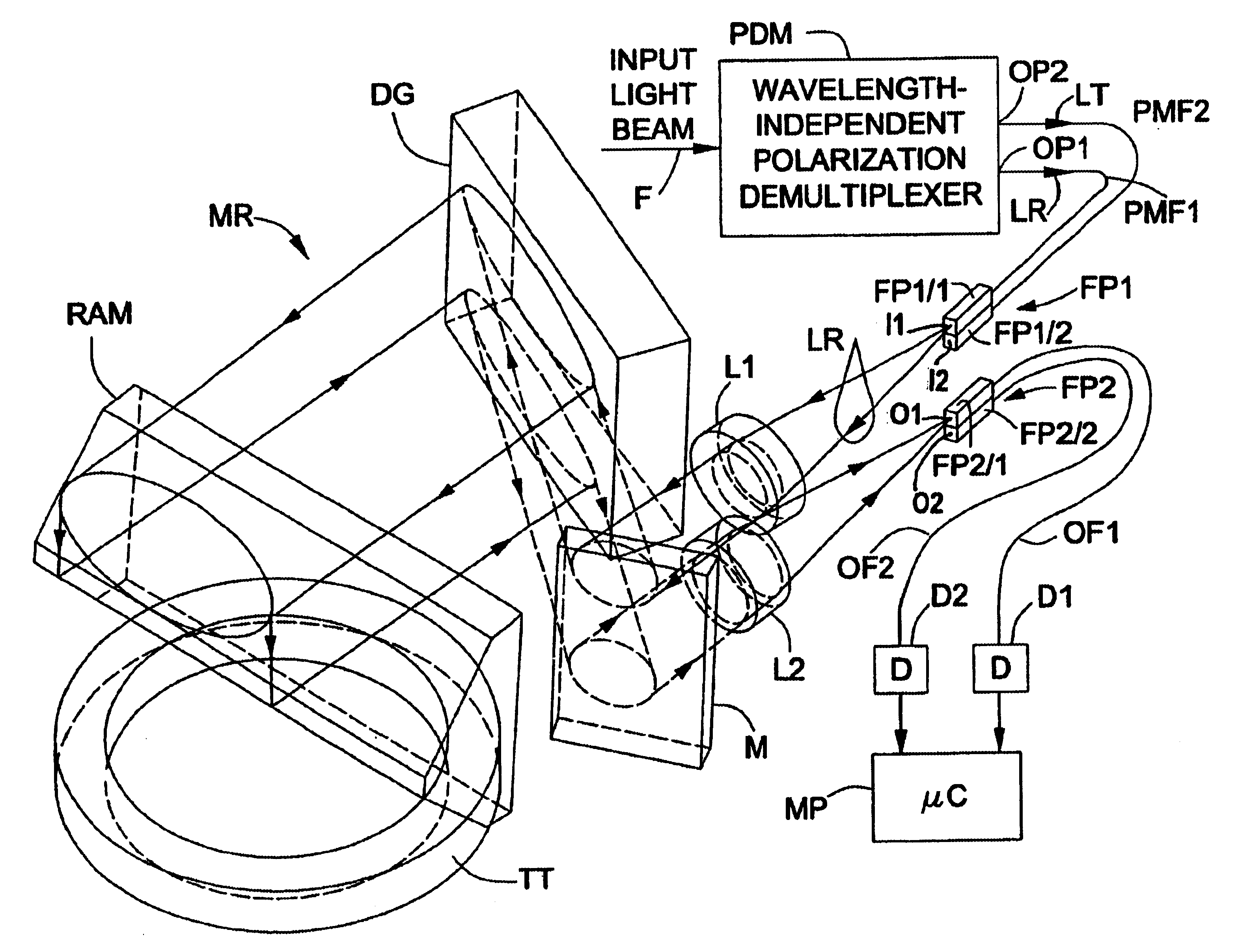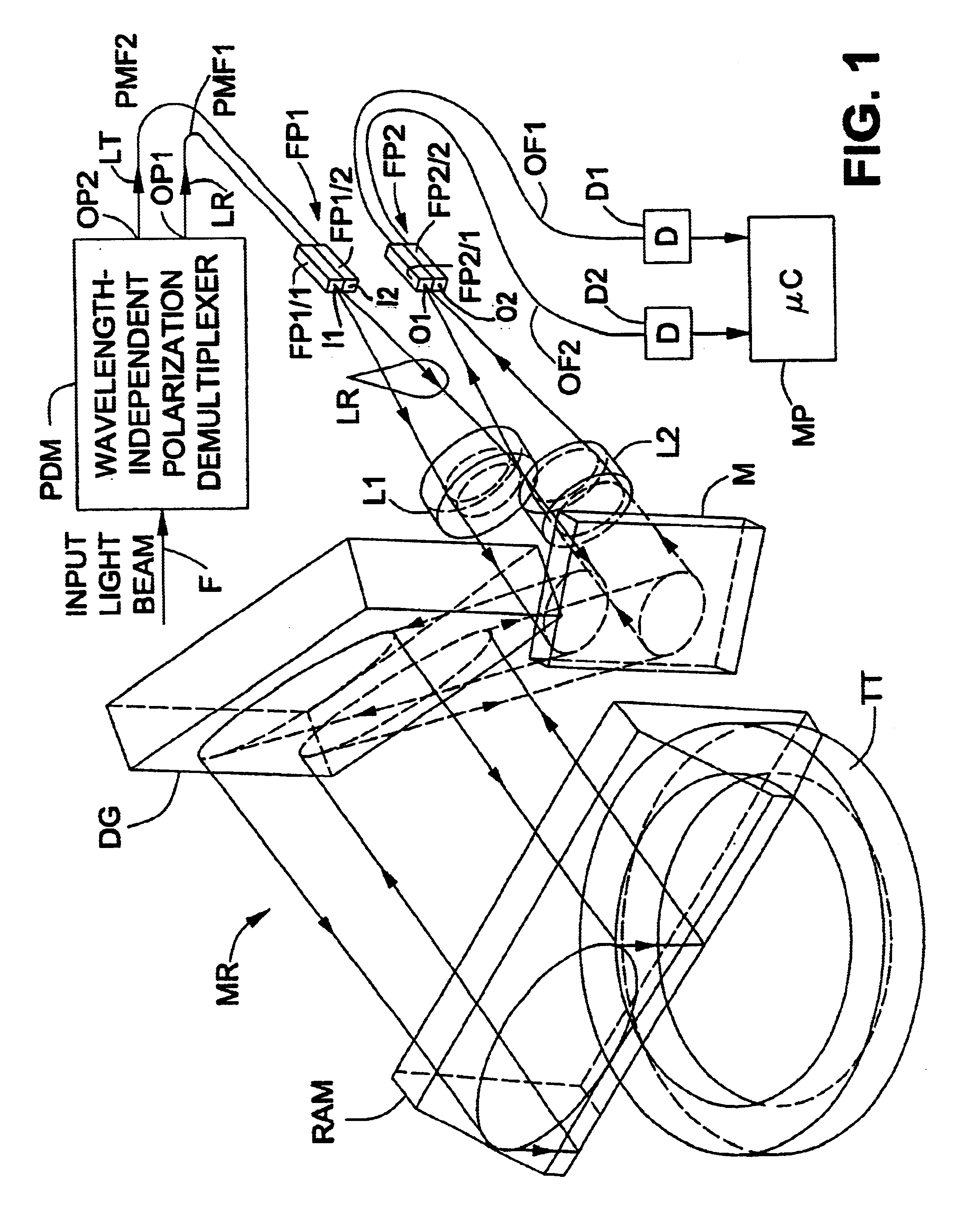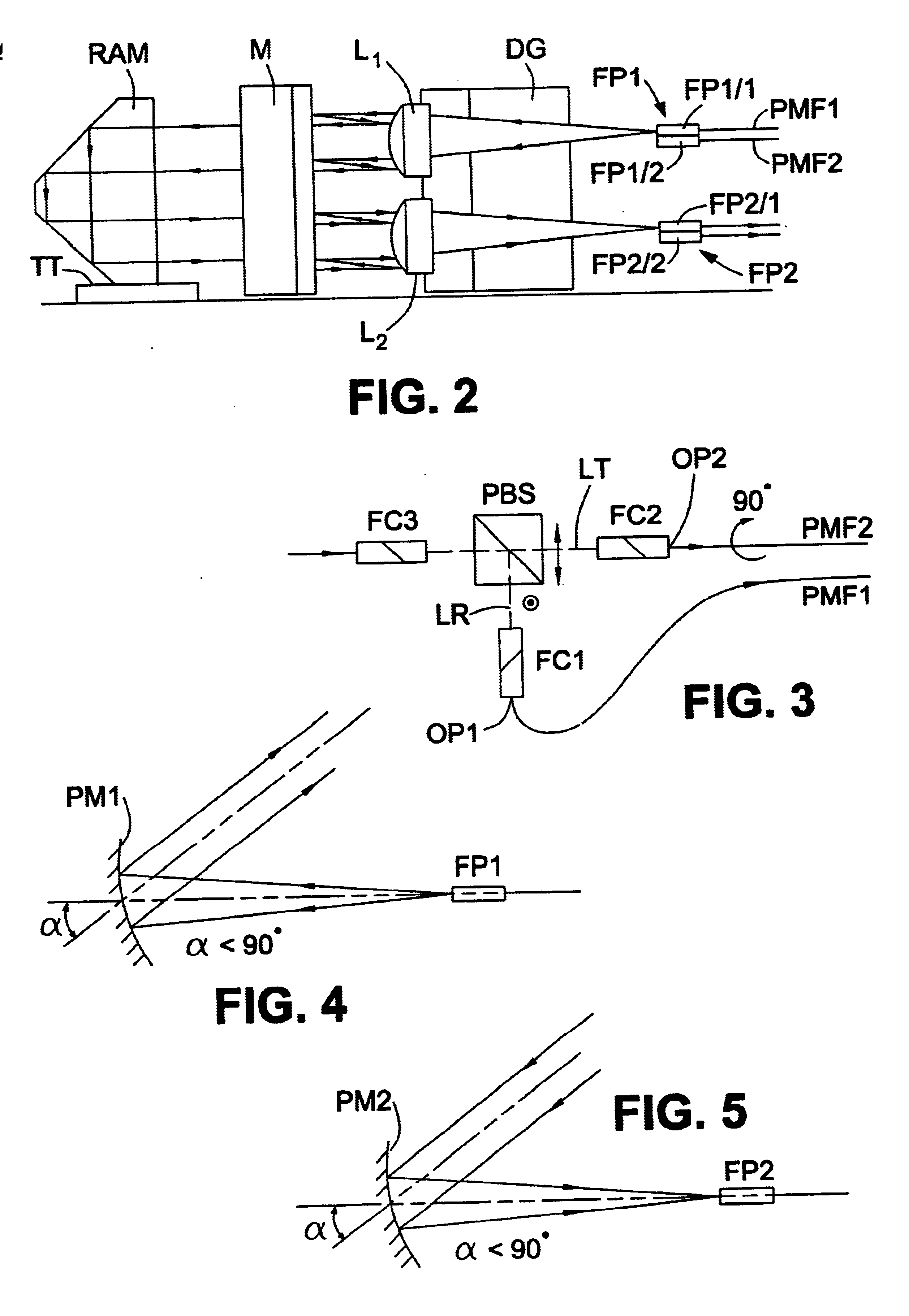Optical spectrum analyzer
a spectrum analyzer and optical spectrum technology, applied in the field of optical spectrum analyzers and monochromators, can solve the problems of inability to fully solve the problem of significant back-reflection into the input fiber, inability to easily compensate or take into account the beam expander, and the inevitable inherent wavelength-dependent polarization-dependent loss of components such as couplers, circulators and isolators
- Summary
- Abstract
- Description
- Claims
- Application Information
AI Technical Summary
Problems solved by technology
Method used
Image
Examples
Embodiment Construction
:
Referring first to FIGS. 1 and 2, an optical spectrum analyzer comprises a wavelength-independent polarization demultiplexer unit PDM (not shown in FIG. 2) and a monochromator section MR. As shown in FIG. 1, the wavelength-independent polarization demultiplexer PDM has an input port to which the input light beam for analysis is supplied via an optical fiber F and two output ports OP1 and OP2 for first and second light beams LR and LT, respectively, having mutually orthogonal linear states of polarization. The output ports OP1 and OP2 are coupled to the monochromator section MR by polarization-maintaining (PM) fibers PMF1 and PMF2, respectively, for conveying the first and second light beams LR and LT to the monochromator section MR. The two PM fibers PMF1 and PMF2 may be single mode or multi-mode at the wavelengths of operation. The birefringence axis of the second polarization-maintaining fiber PMF2 is twisted through 90 degrees relative to that of the first polarization-maintaini...
PUM
 Login to View More
Login to View More Abstract
Description
Claims
Application Information
 Login to View More
Login to View More - R&D
- Intellectual Property
- Life Sciences
- Materials
- Tech Scout
- Unparalleled Data Quality
- Higher Quality Content
- 60% Fewer Hallucinations
Browse by: Latest US Patents, China's latest patents, Technical Efficacy Thesaurus, Application Domain, Technology Topic, Popular Technical Reports.
© 2025 PatSnap. All rights reserved.Legal|Privacy policy|Modern Slavery Act Transparency Statement|Sitemap|About US| Contact US: help@patsnap.com



